Home>Garden Essentials>Garden Storage>What Is A Wardrobe Supervisor
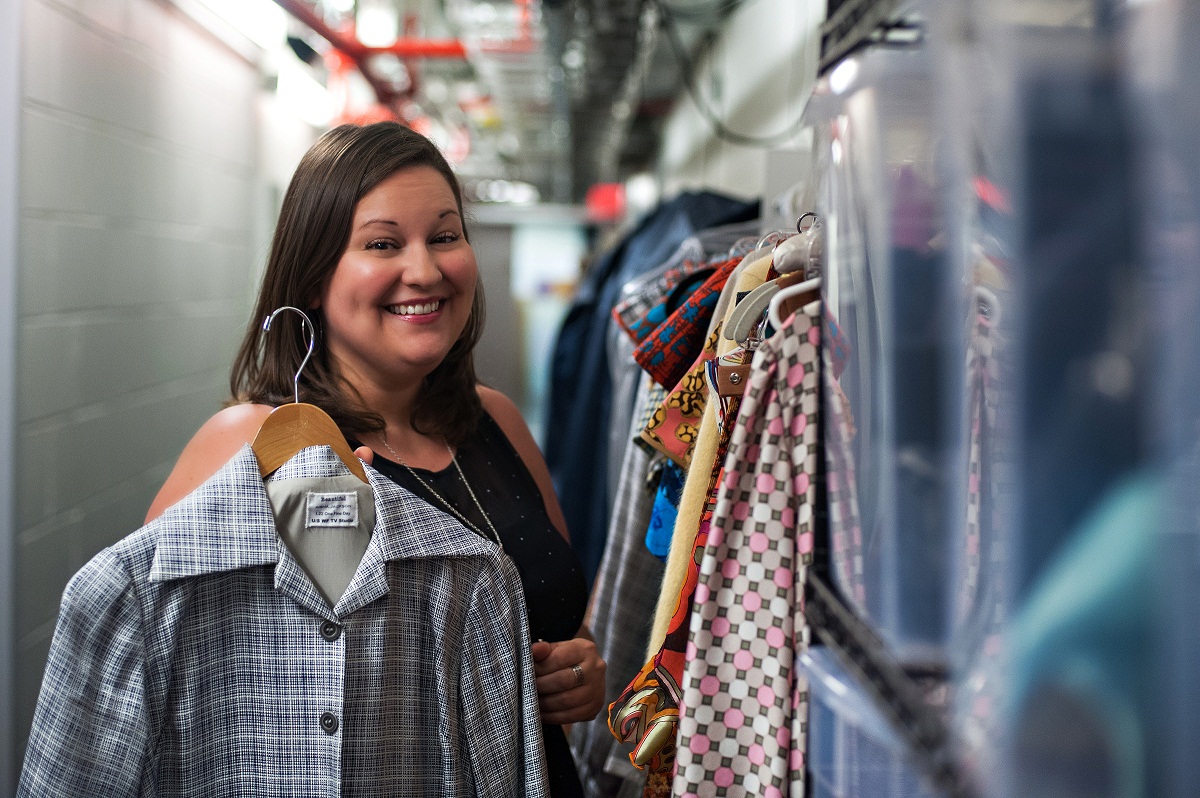

Garden Storage
What Is A Wardrobe Supervisor
Modified: December 7, 2023
Discover the role of a wardrobe supervisor and how they ensure efficient storage and organization for theatrical productions.
(Many of the links in this article redirect to a specific reviewed product. Your purchase of these products through affiliate links helps to generate commission for Storables.com, at no extra cost. Learn more)
Introduction
A wardrobe supervisor plays a crucial role in the world of theater, film, and television productions. This behind-the-scenes expert is responsible for ensuring that the cast and crew’s clothing and costumes are well-organized, properly maintained, and perfectly fitted. From managing the wardrobe department to collaborating with costume designers and overseeing costume fittings, the wardrobe supervisor ensures that the visual elements of a production are executed flawlessly. In this article, we will dive deeper into the role and responsibilities of a wardrobe supervisor, the skills and qualifications required, and why their contribution is essential to the success of any production.
Whether it’s a period drama set in the 18th century or a modern-day comedy, the wardrobe supervisor is responsible for bringing the costumes to life. They are the guardians of the characters’ appearance, ensuring that they are dressed appropriately for their roles and that the costumes meet the director’s vision.
Acting as a liaison between the production team and the wardrobe department, the wardrobe supervisor serves as the point person for all costume-related matters. They work closely with costume designers, directors, and producers to understand the creative vision and requirements for each character’s wardrobe. With their keen attention to detail and strong organizational skills, they manage the entire costume process from design to implementation, ensuring that the costumes enhance the overall production value and storytelling.
Being a wardrobe supervisor requires a unique set of skills and qualifications. Not only do they need a deep understanding of costume design and construction, but they must also possess excellent communication and leadership abilities. From coordinating fittings and alterations to overseeing the organization and inventory management of costumes, they are responsible for every aspect of the wardrobe department’s operations.
Key Takeaways:
- Wardrobe supervisors are indispensable in bringing characters to life through meticulously designed costumes, ensuring historical accuracy, seamless production flow, and collaborative problem-solving for theater, film, and television productions.
- Their expertise in costume design, organization, and leadership fosters a positive and supportive environment, contributing significantly to the success and quality of productions.
Read more: What Is A Construction Supervisor
Definition of a Wardrobe Supervisor
A wardrobe supervisor is a highly skilled professional who manages and oversees the costume department in theater, film, and television productions. They are responsible for ensuring that the cast’s costumes are of high quality, properly maintained, and in line with the director’s vision and the character’s portrayal. The wardrobe supervisor works closely with costume designers, directors, and production teams to bring the characters to life through their costumes.
The main role of a wardrobe supervisor is to oversee all aspects of the wardrobe department, from costume design and construction to fittings, alterations, organization, and inventory management. They collaborate with the production team to understand the vision of the production and determine the specific costume requirements for each character.
With their expertise in costume design and construction, the wardrobe supervisor plays a vital role in ensuring that the costumes accurately reflect each character’s personality, time period, and setting. They work closely with costume designers to bring their vision to life, selecting fabrics, colors, and patterns that enhance the visual appeal of the production.
In addition to costume design, the wardrobe supervisor is responsible for managing the wardrobe department’s budget, ensuring that costumes are sourced or created within the allocated funds. They are skilled negotiators who work closely with suppliers and artisans to find the best deals on materials and costume pieces, while maintaining the highest quality standards.
Throughout the production process, the wardrobe supervisor collaborates with the production team, attending meetings and rehearsals to ensure that the costumes align with the overall artistic direction. They work closely with actors during costume fittings, ensuring that the costumes fit properly and are comfortable to wear.
Furthermore, the wardrobe supervisor is responsible for maintaining the integrity of the costumes throughout the production. They oversee the repair and alteration of costumes, ensuring that they are in good condition for each performance or scene. They also manage the organization and inventory of costumes, keeping track of all costume pieces and accessories to ensure that they are readily available when needed.
Overall, the wardrobe supervisor is an integral part of any production, bringing the characters to life through their costumes and ensuring that the visual elements of the production are of the highest quality. Their expertise and attention to detail contribute significantly to the overall success of the production.
Responsibilities of a Wardrobe Supervisor
A wardrobe supervisor has a wide range of responsibilities, all aimed at ensuring that the costumes in a production are well-managed, properly maintained, and contribute to the overall artistic vision. From costume design and construction to fittings, alterations, and organization, the wardrobe supervisor plays a crucial role in bringing the characters to life. Below are some of the main responsibilities of a wardrobe supervisor:
- Collaborating with costume designers: The wardrobe supervisor works closely with costume designers to understand their vision for the costumes. They collaborate on the selection of fabrics, colors, and patterns that best represent the characters and align with the overall artistic direction of the production.
- Managing the wardrobe department: The wardrobe supervisor oversees all aspects of the wardrobe department. They create and manage budgets for costumes, source or create costume pieces, and ensure the timely delivery of costumes for rehearsals and performances.
- Costume design and construction: The wardrobe supervisor may be responsible for designing and creating costumes themselves, or they may oversee a team of costume makers and seamstresses. They ensure that the costumes are well-crafted, accurate for the time period and setting, and meet the specific needs of each character.
- Costume fittings and alterations: The wardrobe supervisor coordinates and conducts fittings with the actors. They ensure that the costumes fit properly and are comfortable to wear, making any necessary alterations or adjustments to achieve the desired fit.
- Organization and inventory management: The wardrobe supervisor keeps detailed records and inventory of all costumes and accessories. They ensure that costumes are properly labeled, stored, and maintained, and are readily available when needed for performances or on-set.
- Communication and leadership: The wardrobe supervisor serves as the main point of contact for the wardrobe department. They communicate effectively with the production team, including directors, producers, and actors, to understand their needs and provide updates on costume progress.
- Working with the cast and crew: The wardrobe supervisor collaborates with the cast and crew to ensure that the costumes enhance the characterizations and storytelling. They communicate with actors to understand their comfort and mobility needs, and provide guidance on the proper care and handling of costumes.
- Troubleshooting and problem-solving: The wardrobe supervisor must be able to think quickly on their feet and handle any costume emergencies or issues that may arise during rehearsals or performances, such as wardrobe malfunctions or last-minute alterations.
- Research and staying updated: The wardrobe supervisor keeps up-to-date with industry trends, historical accuracy, and new costume techniques. They conduct research to ensure the authenticity and appropriateness of the costumes for the production.
The responsibilities of a wardrobe supervisor are varied and demanding, requiring strong organizational, communication, and leadership skills. They contribute significantly to the success of a production by ensuring that the costumes are visually appealing, functional, and reflective of the characters’ personalities and the director’s vision.
Skills and Qualifications Required
Being a wardrobe supervisor requires a unique set of skills and qualifications. They must possess a deep understanding of costume design and construction, as well as excellent organizational, communication, and leadership abilities. Here are some of the key skills and qualifications required for this role:
- Knowledge of costume design and construction: A wardrobe supervisor should have a solid understanding of costume design principles, including fabric selection, pattern making, and sewing techniques. They should be able to create, alter, and repair costumes as needed.
- Attention to detail: Precision and meticulousness are crucial skills for a wardrobe supervisor. They must have a keen eye for detail and accurately ensure that costumes align with the character’s personality, time period, and artistic vision.
- Organizational skills: The wardrobe supervisor is responsible for managing the wardrobe department and all the costumes. They must have excellent organizational skills to keep track of costume inventory, budgets, and schedules.
- Communication and leadership: Strong communication skills are essential as the wardrobe supervisor works closely with costume designers, directors, actors, and production teams. They must be able to effectively convey their ideas, understand the needs of others, and provide clear instructions to the wardrobe department.
- Problem-solving ability: A wardrobe supervisor must be able to think quickly and find solutions to costume-related challenges. They should have the ability to troubleshoot costume issues, make last-minute alterations, and handle wardrobe emergencies in a calm and efficient manner.
- Time management: Productions typically have tight schedules, and the wardrobe supervisor must be able to work within deadlines, ensuring that costumes are ready for fittings, rehearsals, and performances on time.
- Collaboration skills: The wardrobe supervisor works as part of a team, collaborating with costume designers, directors, and actors. They should be able to work effectively with others, take feedback and direction, and contribute to a harmonious and creative working environment.
- Knowledge of historical and period costumes: Depending on the production’s requirements, the wardrobe supervisor should have knowledge of different historical eras and period costumes. This includes an understanding of costume styles, fabrics, and accessories specific to each time period.
- Adaptability and flexibility: Productions may require last-minute changes or adjustments to costumes. A wardrobe supervisor should be adaptable and flexible, able to handle unexpected changes and adjust plans accordingly.
Formal education in costume design, theater, or a related field is often beneficial for a wardrobe supervisor. Additionally, gaining practical experience in costume design and construction through internships, volunteer work, or assisting experienced wardrobe supervisors can help develop the necessary skills and qualifications for this role.
In summary, a successful wardrobe supervisor possesses a combination of technical skills, artistic vision, and strong interpersonal abilities. They bring characters to life through their costumes, ensuring that the costumes are visually stunning, functional, and aligned with the director’s vision and the production’s artistic goals.
Collaboration with Production Team
A wardrobe supervisor plays a vital role in collaborating with the production team to ensure that the costumes align with the overall artistic vision and enhance the storytelling of the production. They work closely with costume designers, directors, producers, and other departments to create a cohesive and visually impressive production. Here are some of the key aspects of collaboration with the production team:
Creative Vision: The wardrobe supervisor collaborates with the costume designer to understand the creative vision for the production. They discuss the characters’ personalities, time period, and setting to determine the appropriate costumes that bring the characters to life. This collaboration ensures that the costumes align with the overall artistic vision and contribute to the storytelling.
Meetings and Rehearsals: The wardrobe supervisor attends production meetings, costume fittings, and rehearsals to stay informed about the progress of the production. They work closely with the director, actors, and other members of the production team to gather feedback, answer questions, and make necessary adjustments to the costumes.
Communication: Effective communication is essential for a wardrobe supervisor. They communicate with the production team, costume designers, and other wardrobe department members to provide updates on costume progress, budgeting, and any challenges that may arise. Clear and open lines of communication help ensure that everyone is on the same page regarding costume requirements and expectations.
Budget Management: The wardrobe supervisor collaborates with the production team to manage the budget allocated for costumes. They work closely with costume designers and producers to find cost-effective solutions while maintaining the desired level of quality. This collaboration helps prioritize costume needs and ensures that the budget is utilized efficiently.
Set and Lighting Considerations: The wardrobe supervisor collaborates with other departments, such as set design and lighting, to ensure cohesiveness and enhance the visual impact of the production. They discuss the color schemes, lighting effects, and overall ambiance of each scene to ensure that the costumes are complementary and properly showcased.
Continuity: The wardrobe supervisor collaborates with the director and other departments to ensure continuity throughout the production. They work closely with the script supervisor and the hair and makeup team to ensure that the costumes, hairstyles, and makeup remain consistent throughout different scenes and takes.
Costume Fittings: The wardrobe supervisor collaborates with actors during costume fittings, ensuring that the costumes fit well and are comfortable to wear. They take note of actors’ feedback and make necessary adjustments to achieve the desired look and feel. This collaboration helps create a comfortable and confident environment for the actors.
Through effective collaboration with the production team, a wardrobe supervisor ensures that the costumes align with the artistic vision, enhance the storytelling, and contribute to the overall success and quality of the production. Their ability to collaborate and communicate effectively helps create a cohesive and visually impressive production.
Read more: What Is A Wardrobe
Managing the Wardrobe Department
A wardrobe supervisor is responsible for efficiently managing the wardrobe department, which involves overseeing various aspects of costume production and maintenance. This includes budgeting, sourcing or creating costumes, organizing costume inventory, coordinating fittings, and ensuring the overall smooth operation of the department. Here are some key elements of managing the wardrobe department:
Budget Management: The wardrobe supervisor plays a crucial role in managing the budget allocated for costumes. They work closely with the production team and costume designer to determine the cost and availability of materials. By carefully balancing the budget while maintaining the desired quality, they ensure that the costumes are created within financial constraints.
Sourcing or Creating Costumes: Depending on the production’s requirements, the wardrobe supervisor may need to source costumes from rental houses, thrift stores, or other suppliers. They acquire costumes or materials needed to create costumes if no pre-made options are available. This involves researching and negotiating with suppliers, ensuring that the costumes are delivered in a timely manner.
Organization and Inventory Management: The wardrobe department typically manages a vast inventory of costumes, accessories, and other related items. The wardrobe supervisor is responsible for maintaining the organization and inventory management system. They keep track of the availability and condition of costumes, ensuring that they are properly labeled, stored, and readily accessible when needed for fittings or performances.
Fittings and Alterations: The wardrobe supervisor coordinates and conducts fittings with actors to ensure that the costumes fit properly and are comfortable to wear. They take accurate measurements and make necessary alterations or adjustments to achieve the desired look and fit. This process requires excellent communication skills, attention to detail, and proficiency in costume construction techniques.
Maintenance and Repairs: Throughout the production, the wardrobe supervisor oversees the maintenance and repair of costumes. They ensure that costumes are cleaned, pressed, and in good condition for each performance or scene. They also handle any necessary repairs, such as sewing buttons, patching holes, or fixing damaged seams, to extend the lifespan of the costumes.
Supervising Wardrobe Assistants: In larger productions, the wardrobe supervisor may oversee a team of wardrobe assistants. They assign tasks, provide guidance and training, and ensure that the team operates smoothly. Being an effective leader and communicator, the wardrobe supervisor delegates responsibilities and fosters a collaborative and efficient working environment.
Record-Keeping and Documentation: The wardrobe supervisor maintains detailed records and documentation related to the costumes and wardrobe department. This includes a record of costume measurements, fittings, alterations, repairs, and inventory. Accurate documentation allows for easy reference and ensures that costumes can be recreated or modified if needed.
Adherence to Safety and Health Guidelines: The wardrobe supervisor ensures that all costumes and accessories meet safety and health guidelines, especially when it comes to fire safety, fabric allergies, or potential hazards. They stay up-to-date with industry standards and regulations to ensure the well-being of the cast and crew.
By effectively managing the wardrobe department, the wardrobe supervisor ensures that the production runs smoothly, costumes are well-maintained, and all costume-related processes are executed efficiently. Their organizational skills, attention to detail, and ability to coordinate multiple tasks contribute to the overall success and quality of the production.
Costume Design and Construction
One of the key responsibilities of a wardrobe supervisor is overseeing the costume design and construction process. They work closely with costume designers to bring the artistic vision to life, ensuring that the costumes accurately reflect the characters, time period, and overall aesthetic of the production. Here are some important aspects of costume design and construction:
Collaboration with Costume Designers: The wardrobe supervisor collaborates closely with the costume designer to understand their vision for the costumes. They discuss the characters’ personalities, time period, and setting to determine the appropriate design elements. By working together, they ensure that the costumes align with the overall artistic direction of the production.
Research and Concept Development: The wardrobe supervisor conducts research to gain a deep understanding of the time period, culture, and fashion trends relevant to the production. They study historical references, consult fashion resources, and explore visual inspiration to inform the design choices. This research helps in developing concept boards and sketches that serve as a foundation for costume design.
Fabric and Material Selection: The wardrobe supervisor utilizes their knowledge of fabrics and materials to select appropriate options for each costume. They consider factors such as texture, weight, drape, and historical accuracy. They work within the allocated budget to identify cost-effective solutions without compromising the desired visual impact.
Pattern Making and Cutting: In some cases, the wardrobe supervisor may need to create custom patterns for the costumes. They take measurements of the actors and use those measurements to draft patterns that will guide the construction process. They cut the fabric according to the patterns, ensuring precision and accuracy.
Sewing and Construction Techniques: The wardrobe supervisor should have a solid understanding of sewing techniques to construct the costumes. They know how to operate sewing machines, use hand-sewing techniques, and apply appropriate construction methods to ensure durability and comfort. They might also employ techniques such as dyeing, distressing, and aging to achieve specific effects.
Embellishments and Accessories: Depending on the design requirements, the wardrobe supervisor adds embellishments and accessories to enhance the costumes. This can include trims, appliques, beading, embroidery, or other decorative elements. They ensure that the embellishments are securely attached and visually appealing.
Costume Fittings and Adjustments: The wardrobe supervisor coordinates and conducts costume fittings with the actors. They ensure that the costumes fit well and are comfortable to wear. If any adjustments are required, such as hemming, taking in, or letting out, they make the necessary alterations to achieve the desired fit and aesthetic.
Quality Control and Final Touches: Before the costumes are used in the production, the wardrobe supervisor conducts quality control checks. They examine each costume for any flaws, loose threads, or unfinished details. They make any final adjustments or corrections to ensure that the costumes are of the highest quality before they are worn by the actors.
Collaboration with other Departments: Throughout the costume design and construction process, the wardrobe supervisor collaborates with other departments, such as set design and lighting, to ensure that the costumes integrate seamlessly with the overall production design. They consider factors such as color schemes, lighting effects, and set elements to create a harmonious visual presentation.
The wardrobe supervisor’s expertise in costume design and construction is crucial in bringing the director’s vision to life. Through collaboration, research, and skillful execution, they ensure that the costumes not only enhance the characters but also contribute to the storytelling and overall success of the production.
A wardrobe supervisor is responsible for managing and organizing all costumes for a production. They oversee fittings, alterations, and maintenance of costumes, as well as coordinating with the costume designer and production team.
Costume Fittings and Alterations
Costume fittings and alterations are an integral part of the wardrobe supervisor’s responsibilities. They work closely with the actors to ensure that the costumes fit properly, are comfortable to wear, and enhance the character’s portrayal. Here are some important aspects of costume fittings and alterations:
Coordination and Scheduling: The wardrobe supervisor is responsible for coordinating and scheduling costume fittings with the actors. They ensure that fittings are conducted in a timely manner, allowing sufficient time for any necessary alterations before the production begins.
Taking Accurate Measurements: The wardrobe supervisor takes accurate measurements of each actor to ensure that the costumes fit properly. They measure key areas such as chest, waist, hips, and inseam. These measurements serve as a guide to select the appropriate costume sizes or to create custom-made costumes.
Try-On and Evaluation: During the fittings, the actors try on the costumes so that the wardrobe supervisor can check their fit and overall appearance. They carefully evaluate how the costumes sit on the actors’ bodies and take note of any areas that may require adjustments or alterations.
Adjustments and Alterations: Based on the evaluation during the fittings, the wardrobe supervisor makes adjustments and alterations to achieve the desired fit and look. This can include taking in or letting out seams, hemming pants or skirts, adjusting waistbands, and altering sleeve lengths.
Communication and Collaboration: The wardrobe supervisor communicates with the actors during the fittings, considering their feedback on comfort, movement, and any concerns they may have. They collaborate closely with the actors to ensure that the costumes reflect their character’s personality and support their performances.
Craftsmanship and Attention to Detail: The wardrobe supervisor’s craftsmanship and attention to detail are essential during alterations. They ensure that the alterations seamlessly blend with the original construction of the costume. This includes matching fabrics, trims, and finishes to maintain the costume’s integrity and visual appeal.
Multiple Fittings: In some cases, multiple fittings may be necessary, especially if extensive alterations are required or if there are significant changes in the actor’s body shape. The wardrobe supervisor schedules additional fittings to ensure that the costumes fit perfectly throughout the production.
Comfort and Mobility: The wardrobe supervisor prioritizes the comfort and mobility of the actors when making alterations. They consider factors such as ease of movement, breathability, and flexibility. They ensure that the costumes do not restrict the actors’ ability to perform and express themselves on stage or on-screen.
Final Fitting and Approval: Once all the alterations are complete, a final fitting takes place to ensure that the costumes fit impeccably. The actors try on the costumes once again, and the wardrobe supervisor conducts a thorough inspection to ensure that all adjustments have been properly executed. With the actors’ approval, the costumes are ready for the production.
Costume fittings and alterations are crucial to achieving a cohesive and visually appealing production. The wardrobe supervisor’s expertise, attention to detail, and ability to work closely with the actors ensure that the costumes not only fit comfortably but also enhance the actors’ performances and bring their characters to life.
Organization and Inventory Management
Effective organization and inventory management are essential for a wardrobe supervisor to ensure the smooth and efficient operation of the wardrobe department. Proper organization and management of costumes and accessories are key to delivering high-quality productions. Here are some important aspects of organization and inventory management:
Establishing a System: The wardrobe supervisor creates and maintains a system for organizing costumes and accessories. They assign designated storage spaces for each production, ensuring that costumes are easily accessible and properly labeled. This system allows for efficient retrieval and return of costumes.
Inventory Tracking: The wardrobe supervisor keeps a detailed inventory of all costumes and accessories. They record the name of the production, the character associated with the costume, descriptions of each item, and any additional important information. This tracking system helps to manage the availability and condition of costumes.
Labeling and Tagging: Each costume piece and accessory is labeled and tagged with relevant information, such as the name of the character, the scene, and any specific notes about the item. This labeling system ensures that each item can be easily identified and retrieved when needed.
Tracking Costume Usage: The wardrobe supervisor keeps track of the usage of costumes during rehearsals and performances. They record which actors wear which costumes, ensuring that costumes are used appropriately and rotated as necessary to prevent excessive wear and tear.
Cleaning and Maintenance Schedule: The wardrobe supervisor establishes a cleaning and maintenance schedule to ensure that costumes are properly cared for. They coordinate with the wardrobe department to clean and press costumes after each use, remove any stains or odors, and address any repairs or alterations required. This schedule ensures that costumes are in the best possible condition for each performance or scene.
Costume Returns and Check-In: The wardrobe supervisor establishes a check-in system for costume returns. They ensure that costumes are returned promptly after use, and they conduct inspections to confirm that all pieces are accounted for and in the proper condition. This process allows for easy identification of missing or damaged items.
Storage and Preservation: The wardrobe supervisor ensures that costumes are stored properly to prevent damage from environmental factors such as light, humidity, or pests. They use appropriate storage containers, hang garments on padded hangers, and protect delicate items with acid-free tissue paper. These preservation techniques prolong the lifespan of costumes.
Inventory Evaluation and Updating: The wardrobe supervisor regularly evaluates the inventory to identify items that need repair, replacement, or updating. They work with the production team and costume designers to understand any changes or new requirements. Updating the inventory ensures that the wardrobe department is equipped with the necessary costumes for future productions.
Collaboration with Other Departments: The wardrobe supervisor collaborates with other departments, such as set design and props, to ensure that costumes are properly integrated into the overall production design. They communicate any specific requirements or considerations to ensure a cohesive visual presentation.
Documentation and Record-Keeping: The wardrobe supervisor maintains accurate documentation and record-keeping related to costumes and inventory. This includes records of costumes used in each production, alterations made, repairs conducted, and any additional notes. This information serves as a valuable resource for future reference and planning.
Organizing and managing the wardrobe department’s inventory is crucial for a successful production. The wardrobe supervisor’s attention to detail, organization skills, and ability to implement efficient systems help ensure that costumes are easily accessible, well-maintained, and contribute to the seamless execution of the production.
Read more: How To Be A Construction Site Supervisor
Communication and Leadership Skills
Effective communication and strong leadership skills are essential for a wardrobe supervisor to excel in their role. They serve as a bridge between the production team, costume designers, actors, and the wardrobe department. Here are some key aspects of communication and leadership skills:
Clear and Concise Communication: The wardrobe supervisor must be able to communicate their ideas, instructions, and expectations clearly and effectively. They ensure that all members of the wardrobe department understand their roles and responsibilities, and they provide clear guidance on costume design, construction, fittings, and maintenance.
Active Listening: The wardrobe supervisor actively listens to the needs, feedback, and concerns of the production team, costume designers, and actors. They encourage open dialogue and create a safe space for actors to express their thoughts on costume comfort and practicality. Through active listening, they gain insights that can be valuable in the decision-making process.
Collaboration and Teamwork: The wardrobe supervisor works collaboratively with costume designers, directors, producers, and other departments to ensure that the costumes align with the overall artistic vision of the production. They promote a spirit of teamwork and cooperation, fostering an environment where everyone’s ideas and contributions are valued.
Conflict Resolution: In production environments, conflicts and disagreements may arise. The wardrobe supervisor must have strong conflict resolution skills to address any issues that may impact the smooth operation of the wardrobe department. They approach conflicts in a calm, objective, and constructive manner, seeking solutions that benefit all parties involved.
Leadership and Delegation: The wardrobe supervisor leads the wardrobe department and oversees the work of wardrobe assistants. They delegate tasks effectively, ensuring that each team member understands their responsibilities and supports the overall goals of the production. They provide guidance, mentorship, and feedback to develop the skills and talents of their team.
Adaptability and Flexibility: Productions often require last-minute changes or adjustments. The wardrobe supervisor must be adaptable and flexible, ready to handle unexpected requests and accommodate new requirements. They communicate the changes effectively to the wardrobe team and find creative solutions to meet the updated needs.
Time Management: Productions work on tight schedules, and the wardrobe supervisor must be skilled in managing time efficiently. They create timelines and schedules for costume design, construction, fittings, and alterations, ensuring that all tasks are completed in a timely manner to meet production deadlines. They effectively prioritize and manage multiple tasks simultaneously.
Positive and Supportive Attitude: A wardrobe supervisor sets the tone for the wardrobe department and influences the overall working atmosphere. They maintain a positive and supportive attitude, fostering an environment where creativity, collaboration, and innovation thrive. They offer encouragement and appreciation to the team members for their hard work and dedication.
Critical Thinking and Problem-Solving: The wardrobe supervisor uses critical thinking skills to analyze and solve costume-related challenges. They identify potential issues in advance and develop contingency plans. In situations that require quick decision-making, they adapt and find practical solutions to ensure the successful execution of the costumes.
Professionalism and Ethics: The wardrobe supervisor upholds the highest standards of professionalism and ethical conduct. They maintain confidentiality and respect the privacy of the actors. They act as role models, demonstrating integrity, reliability, and professionalism in all aspects of their work.
Communication and leadership skills are essential for a wardrobe supervisor to effectively interact with the production team, oversee the wardrobe department, and ensure the successful execution of costumes. These skills contribute to a positive and collaborative work environment, resulting in exceptional productions that meet the artistic vision and exceed expectations.
Working with Cast and Crew
Working with the cast and crew is a crucial aspect of a wardrobe supervisor’s role. They collaborate closely with actors, directors, production teams, and other departments to ensure that the costumes align with the characters, enhance the storytelling, and contribute to a cohesive production. Here are some key considerations when working with the cast and crew:
Understanding Characterization: The wardrobe supervisor works closely with the actors to understand their characters’ personalities, backgrounds, and motivations. They collaborate to translate these aspects into costume choices that accurately reflect and enhance the characters’ portrayal on stage or on-screen.
Collaborative Costume Design: The wardrobe supervisor collaborates with actors to consider their input and preferences regarding their costumes. They value open dialogue and encourage actors to express their thoughts and ideas. By incorporating the actors’ perspectives, the wardrobe supervisor ensures that the costumes align with the actors’ interpretation of their characters.
Guiding Actors Through Fittings: During costume fittings, the wardrobe supervisor guides the actors through the process. They explain the fittings’ purpose, provide clear instructions, and encourage actors to communicate any concerns or discomfort they experience. This collaborative approach helps establish trust and rapport with the actors.
Creating a Comfortable Environment: The wardrobe supervisor understands the importance of creating a comfortable environment for actors during the costume fitting process. They are attentive to the actors’ needs and make adjustments to ensure that the costumes fit well and allow for ease of movement. This collaborative approach enhances the actors’ confidence and performance on stage or on-screen.
Encouraging Collaboration Across Departments: The wardrobe supervisor fosters a spirit of collaboration across various departments, encouraging communication and information sharing. They work closely with the hair and makeup team, set designers, and lighting crew to ensure that costumes seamlessly integrate with other production elements.
Supporting Actors’ Character Development: The wardrobe supervisor supports the actors’ character development by providing them with background information on the costumes and accessories. They make actors aware of significant design choices and historical context that inform the character’s costume. This information helps actors to refine their interpretations and create a more authentic portrayal.
Respecting Cultural Sensitivities and Diversity: A wardrobe supervisor is sensitive to cultural representation and respects the diversity of the cast. They ensure that costumes accurately reflect the diverse backgrounds of the characters while avoiding stereotypes or misappropriation of cultural elements. They consult with cultural consultants when necessary to ensure authenticity and respect.
Collaboration in Costume Changes: During quick costume changes, the wardrobe supervisor works collaboratively with actors and crew members to ensure smooth transitions. They provide efficient guidance and support to actors during these moments, making sure that the changes happen seamlessly and on time.
Addressing Actor Preferences and Concerns: The wardrobe supervisor takes the time to listen and address any concerns or preferences that actors may have regarding their costumes. They work together to find solutions that are both visually appealing and comfortable to wear, making adjustments and alterations to meet the actors’ needs whenever possible.
Building Relationships and Trust: The wardrobe supervisor strives to build strong relationships based on trust and mutual respect with the cast and crew. They are approachable, responsive, and supportive, creating an atmosphere where actors and crew members feel comfortable discussing costume-related matters.
Valuing the Team’s Contributions: The wardrobe supervisor recognizes and values the contributions of the cast and crew. They express appreciation for the actors’ collaboration, the crew’s hard work, and the collective effort to bring the costumes to life. This acknowledgment fosters a positive and collaborative working environment.
By working closely with the cast and crew, a wardrobe supervisor ensures that the costumes not only meet the production’s artistic objectives but also contribute to the actors’ confidence and overall performance. Their collaborative approach and attention to detail help create a cohesive and visually impactful production.
Troubleshooting and Problem-solving
Troubleshooting and problem-solving are crucial skills for a wardrobe supervisor to navigate challenges that may arise during the production process. They need to think on their feet, find creative solutions, and ensure the smooth operation of the wardrobe department. Here are some key aspects of troubleshooting and problem-solving:
Quick Thinking and Adaptability: The wardrobe supervisor must be able to think quickly and adapt to unexpected situations. They can encounter various challenges, such as last-minute alterations, wardrobe malfunctions, or changes in the script. Their ability to adapt and make swift decisions is essential to maintain the production’s momentum.
Identifying and Assessing Issues: The wardrobe supervisor recognizes problems or potential issues early on. Whether it’s a costume that doesn’t fit properly, a missing accessory, or a tight deadline, they assess the situation and determine the best course of action. Their attention to detail helps them identify potential problems before they become significant issues.
Collaborative Approach: When facing challenges, the wardrobe supervisor collaborates with the production team, actors, costume designers, and other relevant departments to find solutions. They listen to input from various stakeholders, consider different perspectives, and work together to come up with the most effective plan of action.
Resourcefulness and Creativity: In the face of unexpected obstacles, the wardrobe supervisor demonstrates resourcefulness and creativity in finding solutions. They consider alternative materials, adjust designs or construction techniques, and find innovative ways to work within constraints such as time or budget limitations.
Prioritizing Urgent Matters: When multiple issues arise simultaneously, the wardrobe supervisor prioritizes urgent matters. They assess the impact of each problem on the production and address critical issues first. This allows them to allocate time, resources, and attention effectively.
Working within Budgetary Constraints: The wardrobe supervisor tackles challenges while keeping budget limitations in mind. They find cost-effective solutions without compromising the quality of the costumes. This could involve exploring different sourcing options, repurposing existing items, or making strategic alterations rather than starting from scratch.
Building Relationships and Networking: The wardrobe supervisor builds relationships and networks with suppliers, artisans, and industry professionals. This network provides access to resources, expertise, and advice in times of need. Their professional connections can be invaluable when troubleshooting and finding solutions to specific costume-related challenges.
Effective Communication: The wardrobe supervisor communicates effectively with the production team and actors when addressing challenges. They explain the issue, propose potential solutions, and discuss the impact on the overall production. Clear and concise communication ensures that everyone is on the same page and can contribute to the problem-solving process.
Preventive Measures: The wardrobe supervisor takes proactive steps to prevent issues before they occur. They conduct thorough quality checks, maintain regular maintenance schedules for costumes, anticipate potential problems, and address them in advance. These preventive measures minimize the likelihood of major obstacles during the production.
Remaining Calm under Pressure: Troubleshooting often happens in high-pressure situations, such as just before a performance or during a crowded set. A wardrobe supervisor maintains composure and stays calm under pressure. Their ability to think rationally and make clear decisions is crucial to effectively resolve the issue at hand.
By employing troubleshooting and problem-solving skills, the wardrobe supervisor ensures that potential obstacles don’t disrupt the smooth operation of the wardrobe department and the overall success of the production. Their ability to find creative solutions and overcome challenges contributes to a seamless and visually stunning production.
Importance of a Wardrobe Supervisor in Productions
A wardrobe supervisor plays a vital and indispensable role in the success of theater, film, and television productions. Their expertise, attention to detail, and comprehensive understanding of costume design and management are instrumental in bringing the characters to life and enhancing the visual storytelling. Here are some key reasons why a wardrobe supervisor is essential to a production:
Capturing the Character: A wardrobe supervisor collaborates closely with costume designers, directors, and actors to ensure that the costumes accurately reflect each character’s personality, time period, and setting. They consider the details that help define a character, such as their socioeconomic background, occupation, and personal style. By capturing the essence of each character through costume, the wardrobe supervisor contributes to the actors’ performances and the overall authenticity of the production.
Visual Storytelling: Costumes play a significant role in visual storytelling. The wardrobe supervisor understands the impact that costumes have on the overall aesthetic and narrative of a production. They collaborate with other departments, such as set design, lighting, and hair and makeup, to create a unified visual presentation. By thoughtfully designing and coordinating costumes, the wardrobe supervisor helps to bring the director’s vision to life and elevate the production to a new level of artistic excellence.
Character Development: Costumes are an integral part of an actor’s process of developing their character. The wardrobe supervisor’s guidance and insight into the costumes help actors connect with their characters on a deeper level. By understanding the historical context, cultural influences, and subtleties of costume design, the wardrobe supervisor assists actors in fully embodying their characters and delivering more nuanced performances.
Seamless Production Flow: The wardrobe supervisor ensures that the wardrobe department operates smoothly and efficiently. They manage budgets, coordinate fittings and alterations, and maintain costume inventory and organization. Their exceptional organizational and time management skills contribute to the seamless flow of the production, saving valuable time and resources.
Costume Maintenance and Repairs: Throughout the production, costumes go through wear and tear. The wardrobe supervisor oversees maintenance and repairs to ensure that costumes are always in pristine condition. They conduct regular cleaning, arrange for repairs, and handle any necessary alterations or adjustments. By maintaining the integrity and quality of the costumes, the wardrobe supervisor ensures that they consistently meet the production’s standards.
Adherence to Historical and Stylistic Accuracy: Productions that are set in specific time periods or cultures require a deep understanding of historical and cultural accuracy. The wardrobe supervisor meticulously researches and incorporates authentic costume details to enhance the production’s credibility. Their knowledge of fabrics, patterns, and construction techniques allows for accurate representations of various eras and cultures.
Problem-solving and Troubleshooting: Challenges are inevitable in any production. The wardrobe supervisor’s problem-solving skills and ability to think on their feet are invaluable in quickly resolving costume-related issues. Whether it’s adjusting costumes during quick changes or addressing unexpected wardrobe malfunctions, their expertise allows them to find creative solutions that minimize disruptions and uphold the quality of the production.
Collaboration and Leadership: The wardrobe supervisor serves as a fundamental point of contact between the production team, costume designers, actors, and the wardrobe department. Their exceptional communication and leadership skills facilitate effective collaboration and foster a positive working environment. They shepherd the costume process, ensuring that all stakeholders are well-informed, supported, and their needs are met.
In summary, a wardrobe supervisor’s contributions are indispensable to the success of any production. Their expertise, attention to detail, and ability to collaborate effectively ensure that the costumes not only enhance the characters but also elevate the overall visual impact and storytelling. Through their commitment and passion, wardrobe supervisors bring a production’s vision to life and help create memorable and transformative experiences for audiences.
Read more: What Is A Wardrobe Stylist
Conclusion
A wardrobe supervisor is an essential and irreplaceable figure in theater, film, and television productions. Their expertise in costume design and construction, organization and inventory management, communication and leadership, and problem-solving are vital to the success of any production. They bring characters to life through costumes that accurately portray their personality, time period, and setting, enhancing the visual storytelling and contributing to the overall artistic vision.
From collaborating with costume designers and directors to coordinating fittings, alterations, and maintenance, the wardrobe supervisor ensures that the costumes are of the highest quality and perfectly tailored to each actor. They manage the wardrobe department, working within budgetary constraints, maintaining an organized inventory, and effectively communicating with the production team and actors. Their ability to think on their feet and find creative solutions during troubleshooting helps to overcome challenges that arise throughout the production process.
Through collaboration and leadership, the wardrobe supervisor fosters a positive and supportive environment, building strong relationships with the cast and crew. They listen to actors’ input, address concerns, and support their character development, culminating in performances that are grounded in authenticity and visual impact.
Moreover, the wardrobe supervisor plays a vital role in preserving historical and cultural accuracy when productions are set in specific eras or cultures. They meticulously research and incorporate details that make the costumes visually accurate and culturally respectful.
In conclusion, a wardrobe supervisor’s expertise, attention to detail, organizational skills, and ability to collaborate effectively contribute significantly to the success and quality of a production. They bring the characters to life, enhance the visual storytelling, and ensure that the costumes align with the director’s vision. They navigate challenges with grace, employing problem-solving skills and quick thinking. Without the invaluable contributions of a wardrobe supervisor, productions would lack the visual impact, authenticity, and cohesion that costumes provide.
In appreciation of their dedication, creativity, and ability to weave engaging narratives through fabric and design, the role of a wardrobe supervisor stands as a testament to their vital importance in the world of theater, film, and television.
Frequently Asked Questions about What Is A Wardrobe Supervisor
Was this page helpful?
At Storables.com, we guarantee accurate and reliable information. Our content, validated by Expert Board Contributors, is crafted following stringent Editorial Policies. We're committed to providing you with well-researched, expert-backed insights for all your informational needs.
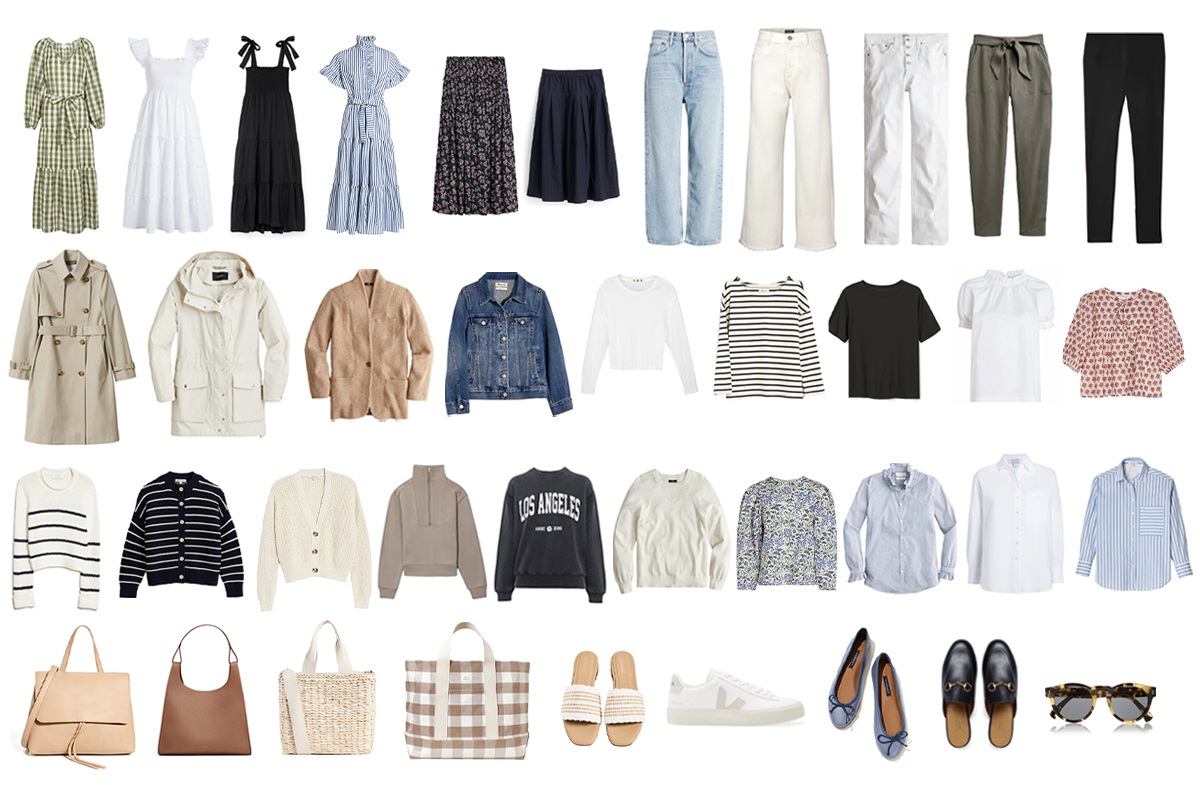
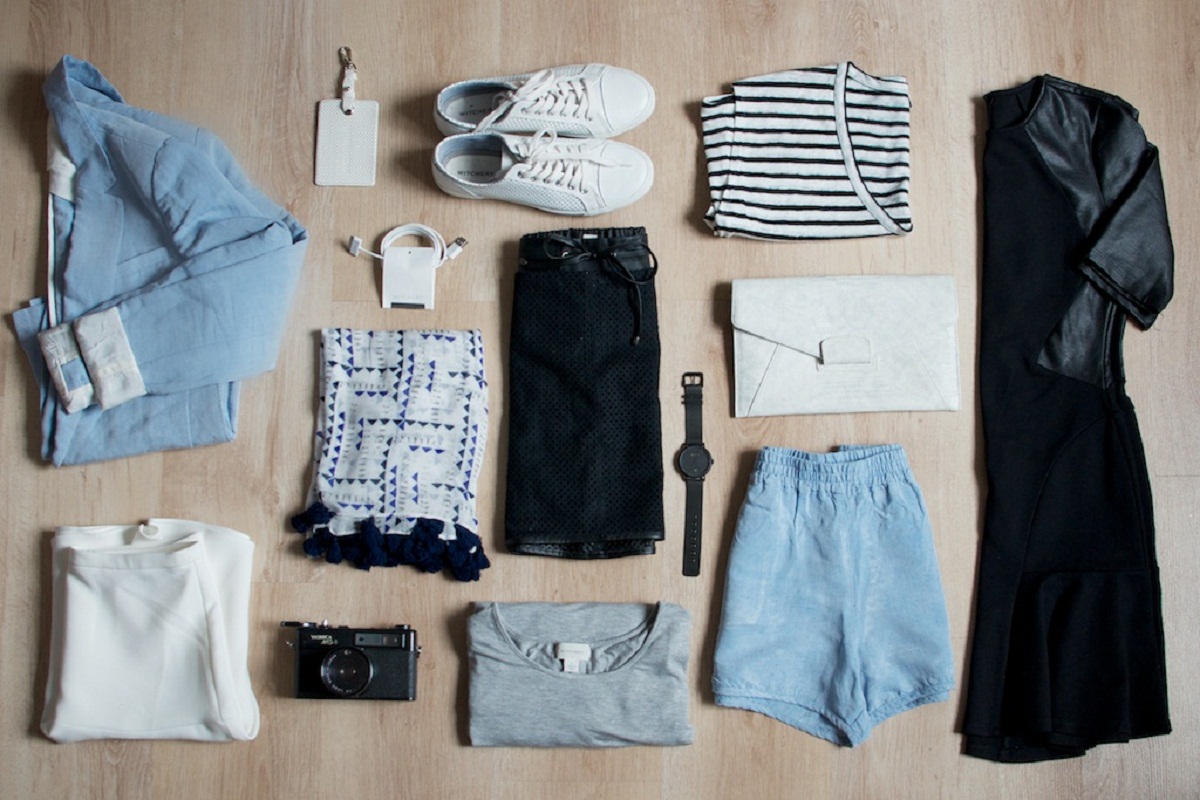
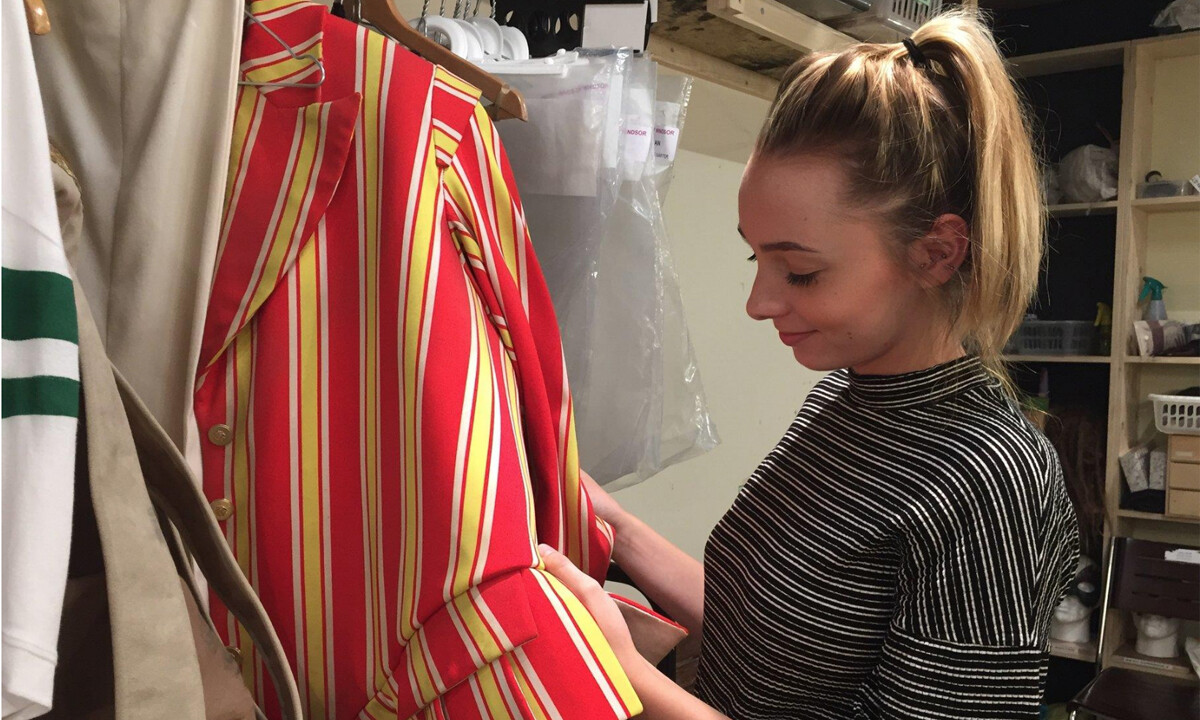
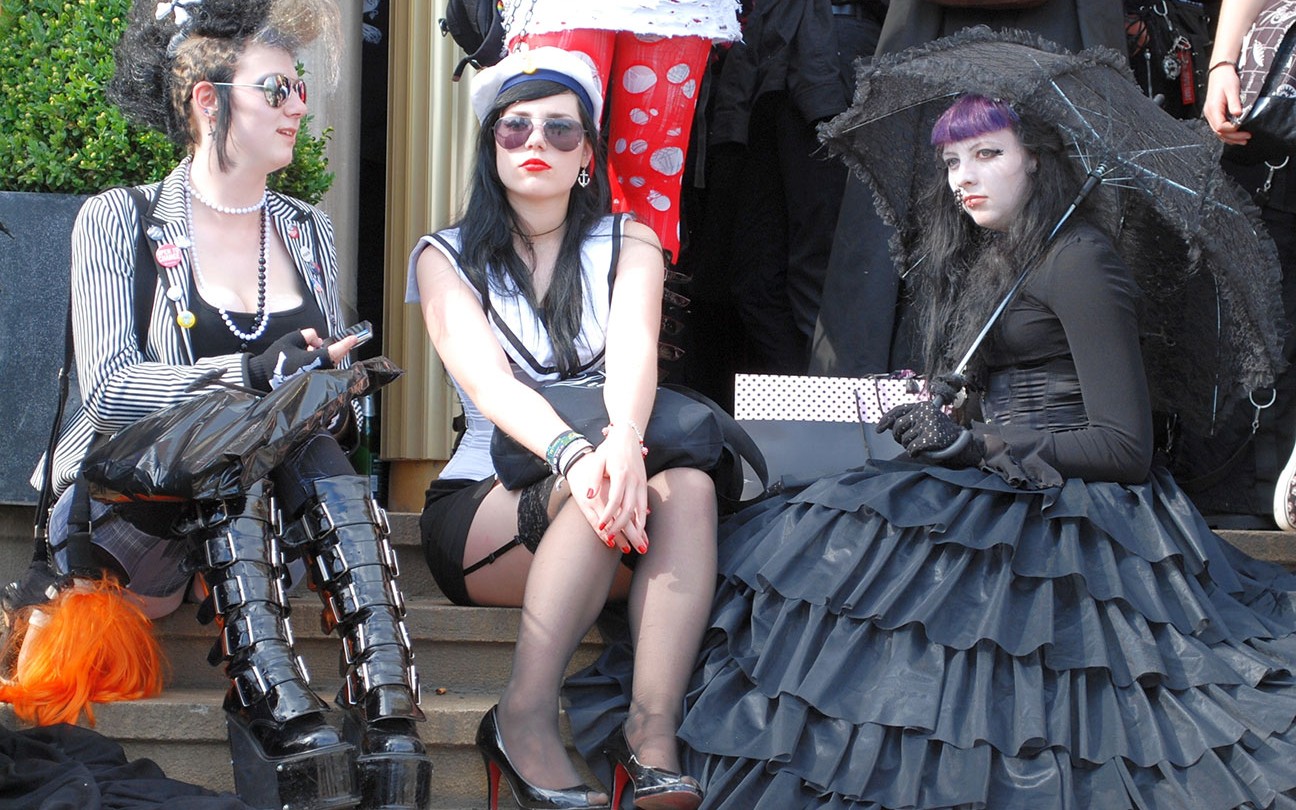



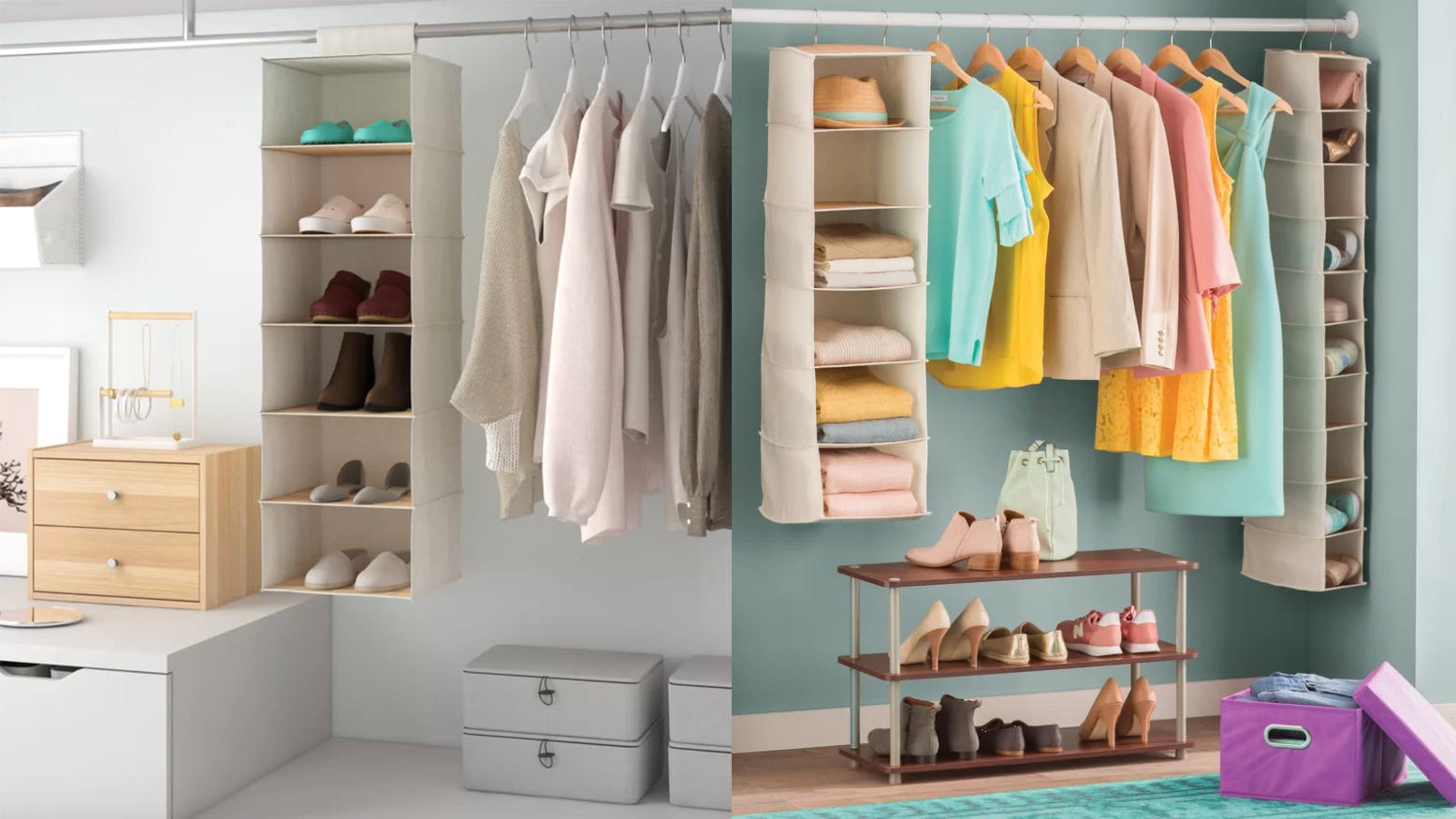

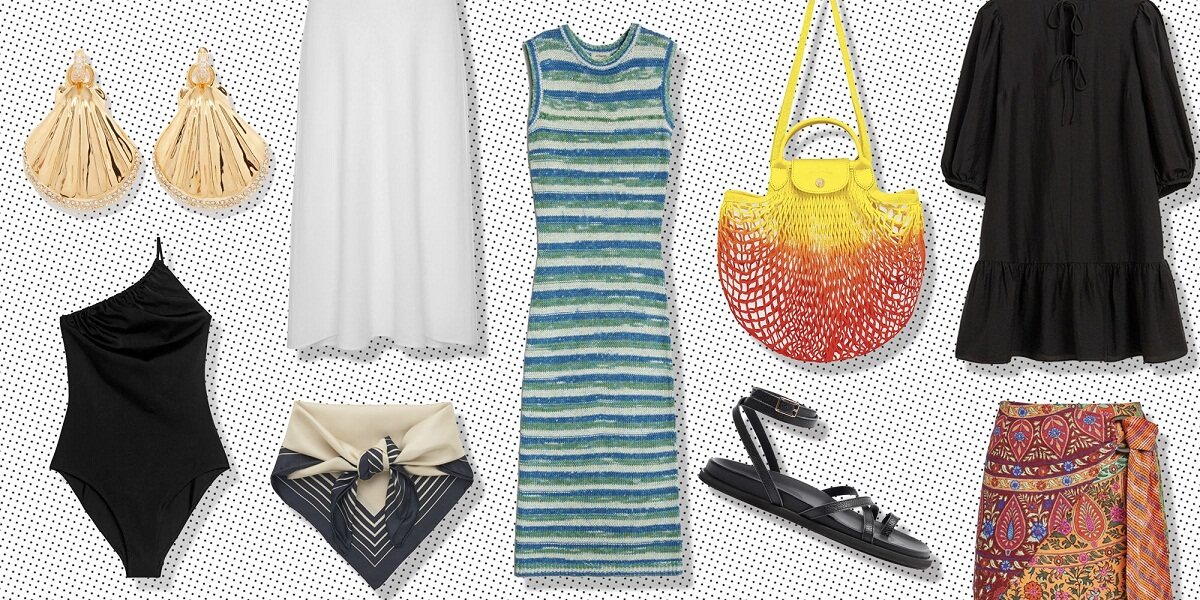



0 thoughts on “What Is A Wardrobe Supervisor”